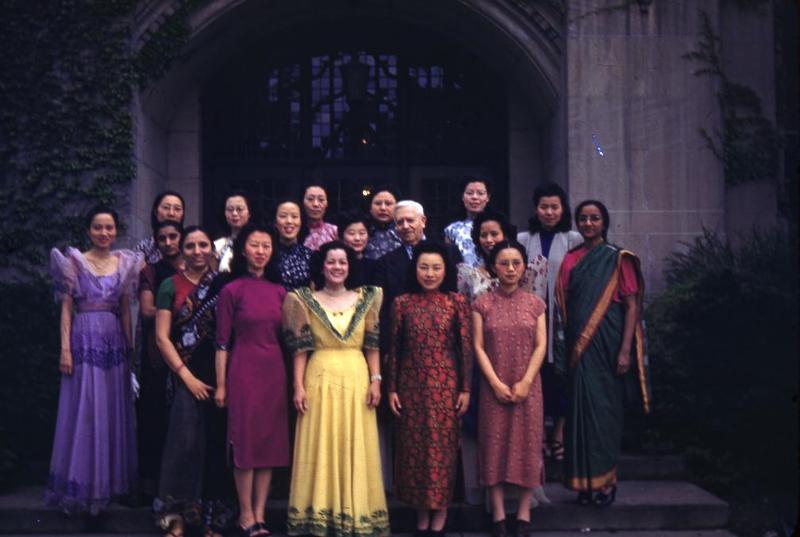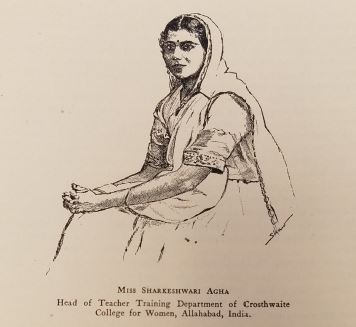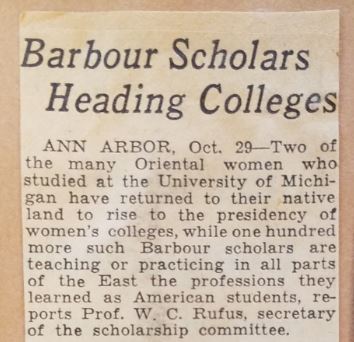Barbour Scholars and Their Influences
"Wherever we went around the globe, Barbour scholars were active and prominent. We are proud of the contributions they are making everywhere, not only in research, in education, in the professions and in the home, but especially in the more essential and more subtle influence toward better international understanding and friendship, stepping stones to world-wide security and peace for all lands linked together by the growing family of Barbour scholars."1
- W. Carl Rufus
From 1917 onwards, the Barbour Scholarship drew women from numerous countries to the University of Michigan. In 1942, W. Carl Rufus penned an article entitled “Twenty-Five Years of the Barbour Scholarships,” in which he described many different women whose lives were influenced by their experiences at U-M:
Kameyo Sadaka
Kameyo Sadaka became the first woman to enroll in the University of Michigan as a Barbour Scholar. She arrived on Michigan's campus from Japan in 1915 and was invited to reside in Mr. Barbour’s home until she felt prepared to begin her studies in the Medical School. Despite initial difficulties acclimating to the University’s curriculum, Sadaka soon excelled at her field of pediatrics. After graduation, she accepted a job at St. Luke’s International Hospital in Tokyo, a hospital renowned as one of the best medical centers in the Far East.2 In the contemporary words of Rufus, Sadaka "[became] a member of the Medical Association of Japan, presents papers, takes an active part in discussions, and is recognized as an authority in her special field."3 She returned the University several years later as a Barbour Fellow.
Sharkeshwari Agha
Sharkeshwari Agha entered the University of Michigan as an already established scholar. She previously obtained her B.A., M.A., and LL.B. from the University of Allahabad in India and sought to obtain another M.A. at the University of Michigan in education. She received her degree in 1930.4 After her time at the University of Michigan, Agha went on to become the head of the Teacher Training Department of the Crosthwaite College for Women, Allahabad.5 Agha was influential in countless women’s lives and became an published and successful educator scholar.
Whang-Kyung Koh
Koh received both a M.A. in economics and Ph.D. in sociology at the University of Michigan, but her influence stretches far beyond Ann Arbor's borders. Before attending the University of Michigan, she became the first Korean woman to graduate from Doshisha University, Kyoto.6 After she graduated from the University of Michigan, she went back to Korea with the "expressed purpose of engaging in work which seeks to help women develop constructively so they may make a positive contribution to the healthy development of Korean society."7 She went on to organize schools for underprivileged women.
Maria C. Lanzar
Maria C. Lanzar attended the University with a political science specialization, focusing on American influence in the Philippines. She wrote a disseration entitled "The Anti-Imperial League" utilizing libraries all across America, received her Ph.D, and returned to Manila as a member of the faculty in political science. She participated in the Philippine Association of University Women and the Philippine Academy of Social Sciences.
Yi-fang Wu
On the latter occasion one of the Chinese Barbour Scholars was called upon to respond extemporaneously. With clear enunciation and excellent English diction she expressed the sincere appreciation of the entire group and pledged the consecration of their lives to the development of education for women in the Orient, to the improvement of the home and society, and to the promotion of the ideal of international understanding, peace, and goodwill. She is now Dr. Yi-fang Wu, president of Ginling College.8
-W. Carl Rufus
Visit Yi-fang Wu's page for more information about her extraordinary accomplishments.
Lucy Wang
Lucy Wang was another Barbour Scholar who became a university professor.
To write of notable Barbour Scholars would be to write of all the Scholarship recipients who arrived at the University of Michigan to further their education. These women became doctors, nurses, teachers, educators, mothers, scientists, and more. They inspired not only the women of their generation, but the generations to come.
1. W. Carl Rufus, "Twenty-Five Years of the Barbour Scholarships," Michigan Alumnus Quarterly Review, Vol. XLIX, No. 11 (December 19, 1942), Bentley Historical Library, University of Michigan.
2. Ibid.
3. Ibid.
4. Ibid.
5. Ibid.
6. Ibid.
7. Ibid.
8. Ibid.



